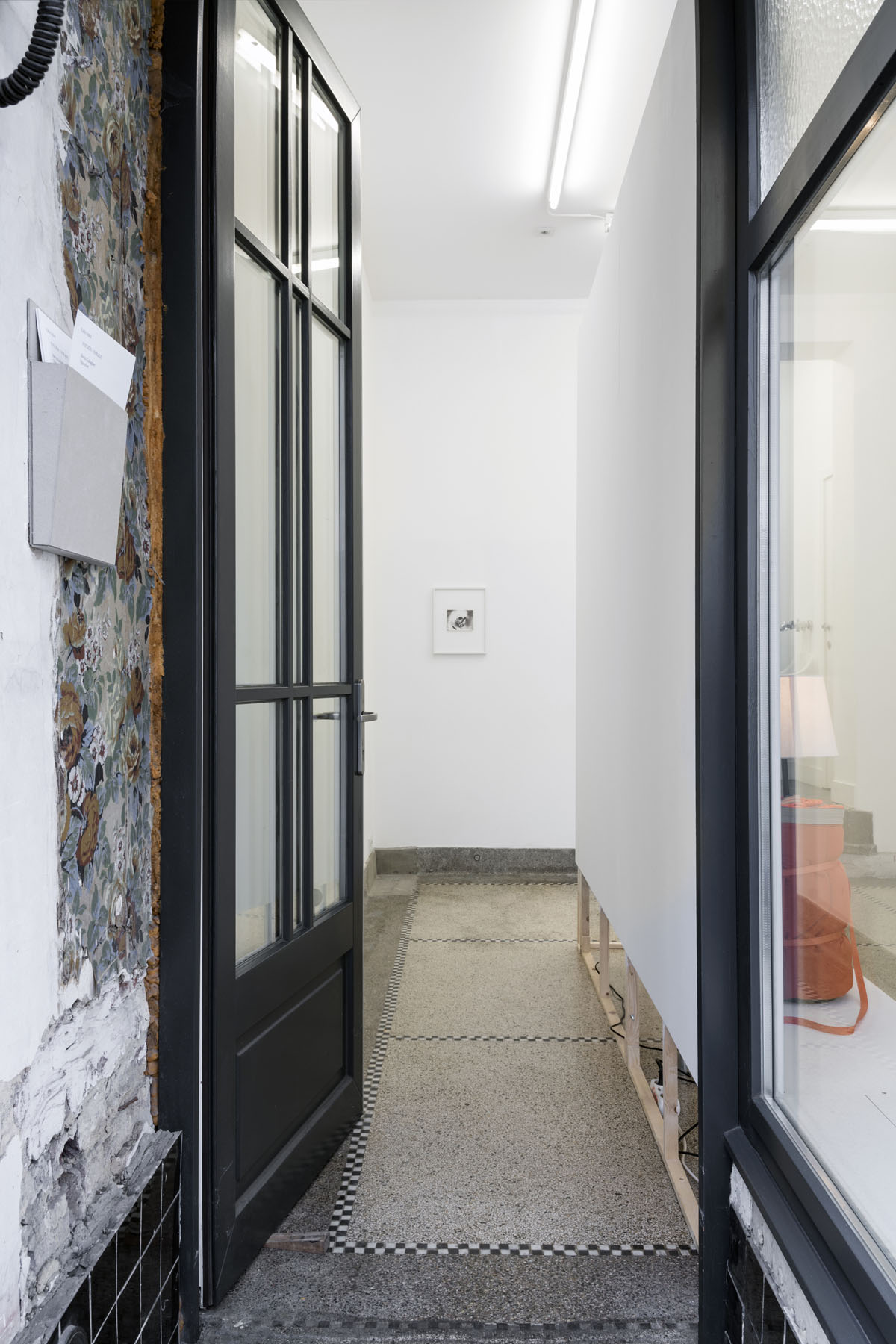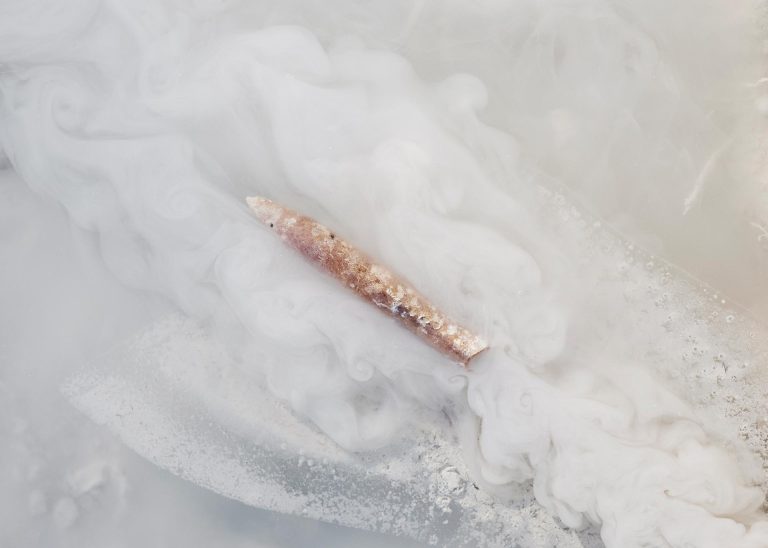Artist: Kevin Gallagher
Exhibition title: Figuration
Venue: ALMA SARIF, Brussels, Belgium
Date: July 3 – August 16, 2020
Photography: Fabrice Shcneider / all images copyright and courtesy of the artists and ALMA SARIF, Brussels
It expresses something living and dynamic, incomplete and playful, and it is equally certain that the word had a graceful sound which fascinated many poets.
Eric Auerbach wrote these lines in 1938, reflecting on the Antique roots of the Latin word figura, what we call today figure. The “living and dynamic” quality of the word comes from its slipperiness: figura is about both an empty form (outline) and the process of its formation and transmission. A “figure of 8” is not an 8 but a contentless copy of its outline and movement of a finger in the air. The simplest form of education (do what I do).
A figure of 8 has a graceful sound. Auerbach imagined the “fascination of many poets”. Meaning becomes the echo of gliding, rolling consonants. The figure slips from visual to tactile to auditive space and back again in the company of people who speak together. Time and community becomes important, as Lisa Robertson writes in Time and the Codex: “The figural shape is already social, already part of a willed production of meaning.” Shaping, learning, listening, copying, repeating, transposing across medium, time, and space are figural processes.
*
A few days ago we were drinking and talking on the square. Joseph said that figuration is the term, in French, for the body of extras hired in a film. I gazed past Joseph into the middle distance at the people walking by, children playing in the fountain, cars parking unremarkably. I forced them into ornament. I cut them (into a graceful abstract noun).
An extra is an actor or actress who is only required to be present. This definition hinges on the strange emphasis of the word “only”, a word which I don’t realise how negative it is until I try to understand it in French. (Stilled frames of films which used dummies or mannequins to economically fill a crowd).
*
Figural space is already social and somehow pre-political (prefiguring). A dark room of echoing voices. For sociologists, figuration is the evolution of social life; the process of human interdependency.
Figural space is material and plastic, Auerbach says. It’s “an architectural and plastic form, or in any case the reproduction of such form, an architect’s plan.” There is a small education booklet published by the US Department of State’s Bureau of International Information Programs, called Democracy in Brief. I open, turn over and flatten the booklet along its spine and the image of a neoclassical columned building stretches across recto and verso, peaking in the middle.
*
Compare the figural to the symbolic. According to Robertson, the symbol “completes a static idea of nature in a corresponding object, say a flower or a plant”. Symbol of flower frozenly recalls ideal of flower. Whereas the figure inspires “a shaping or a human crafting that includes temporal change.” (Digging a hole in the icy ground). When figural meets symbolic, there is a survival of living things.
The figural airs out the symbolic. The figural is the approach: along a corridor, up a hill; a continuous collapsing and unfolding of the point-of-view.
*
It’s like using the Photoshop Inverse Selection Tool on reality. Trying to lasso the thing you are not clicking on (in real time). Figuration is visible only in the blind spot. It’s not the light at the end of the tunnel, but the light and the air that drifts through the holes. A group of extras in the corner of my vision, weaving an ungraspable motif.
Perri MacKenzie

































